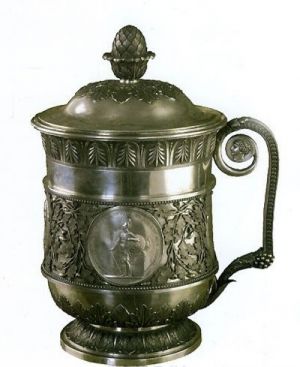Early Russia's silver is highly original and artistic. Russian silversmiths evolved their own characteristic forms and decoration techniques that were not identical with ether Western or Oriental styles. In doing so, they did not alienate themselves from European or Asian influences, even though they did preserve their national sense of form and decoration. Thus, for example, the origin of the .contours of the loving cup, which had analogues in the metal-work of some Oriental peoples, is open to dispute. By the sixteenth century, the heyday of ancient Russian silversmithing, it was already an exclusively Russian form, with soft yet resilient clear-cut outlines. Its design is an architectonic whole by virtue of the precisely calculated proportions of all its components. Even more refined are Russian dippers with their underlying imagery. The best of them are true masterpieces of form. Dippers in the shapes of boats or swans were virtual odes to the broad expanses of Russian's unhurried...
Early Russia's silver is highly original and artistic. Russian silversmiths evolved their own characteristic forms and decoration techniques that were not identical with ether Western or Oriental styles. In doing so, they did not alienate themselves from European or Asian influences, even though they did preserve their national sense of form and decoration. Thus, for example, the origin of the .contours of the loving cup, which had analogues in the metal-work of some Oriental peoples, is open to dispute. By the sixteenth century, the heyday of ancient Russian silversmithing, it was already an exclusively Russian form, with soft yet resilient clear-cut outlines. Its design is an architectonic whole by virtue of the precisely calculated proportions of all its components. Even more refined are Russian dippers with their underlying imagery. The best of them are true masterpieces of form. Dippers in the shapes of boats or swans were virtual odes to the broad expanses of Russian's unhurried...













